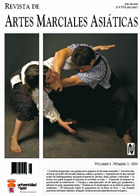Introdução ao boxe flor de ameixa: história, cultura e prática
DOI:
https://doi.org/10.18002/rama.v5i2.109Palavras-chave:
Província de Shandong, boxeur, folclore, filosofia marcial, modernizaçãoResumo
O meihuaquan (“Punho [Boxe] da Flor de Ameixa”) praticou-se tradicionalmente como arte vernácula (folclórica) no grupo étnico dos Han, das províncias chinesas de Shandong, Henan e Hebei. Os registos históricos datam o boxe flor de ameixa do século XVII. A crónica clássica chinesa Shuihu Zhuan (As Crónicas do Pântano) relata as proezas marciais dos heróis proscritos de Shandong durante o século XII, que também podiam ter sido “boxeurs” mei. Assim, durante possivelmente um milénio, a região foi célebre pelas suas artes marciais vernáculas e de banditismo social. A aparente anarquia da região promoveu habilidades marciais altamente desenvolvidas, tanto entre os criminosos como entre aqueles que necessitavam de se defender frente aos bandidos. Os factores culturais, económicos e ambientais da região deram lugar a crenças políticas e religiosas heterodoxas que serviram frequentemente como catalisadoras de seitas marciais, muito destacadamente os “boxeurs”, que na transição do século XX entraram em conflito com o governo Imperial. Estes factores assentaram as bases nos “atributos de carácter” da arte, tal como o taoísmo e a teoria dos cinco elementos, confirmando os princípios estratégicos e mecânicos do boxe flor de ameixa. Durante a última década realizaram-se esforços para globalizar esta arte marcial vernácula. Mais do que conduzir o boxe flor de ameixa à extinção, é provável que o tradicional e o “mais amplo que o local” cheguem a coexistir.Downloads
Métricas alternativas
Referências
Cohen, P.A. (1997). History in Three Keys: The Boxers as Event, Experience, and Myth. New York: Columbia University Press.
Dong, X. & Arkush, R. D. (1995). The Folk Culture of North China. Shijiazhuang: Hebei Education Publishing House.
Esherick, J. W. (1987). The Origins of the Boxer Uprising. Berkeley y Los Angeles: University of California Press.
Fei, X. (2009). Chinese Gentry. Traducido por Zhao Xu-dong & Qin Zhi-jie. Beijing: Joint Publishing.
Hosbawm, E. (1969). Bandits. New York: Dell.
Hsu, C. (2006a). The Characteristics of Ancient Chinese Culture. Beijing: Xinxing Publishing House.
Hsu, C. (2006b). Eternal Rivers: The Turning Point and Unfolding of Chinese History and Culture. Shanghai: Literature and Art Publishing House.
Lu, Y. & Yan, Z. (1990). Exploring the Origin of the Boxer Movement. Jinan: Shandong University Press.
Meihuazhuang. Disponible en http://www.meihuazhuang.ca
Peers, C.J. (2006). Soldiers of the Dragon: Chinese Armies 1500 BC-AD 1840. Oxford: Osprey Publishing.
Shi, J. & Hou, S. (1992). Structure of Feudal Society in China. Kunming: Yunnan University Publishing House.
Shuman, A. (1993). Dismantling local culture. Western Folklore, 52, 345-364.
Sima Qian (109-91 a.C.). Shiji. (Inglés, Records of the Grand Historian). Chinese Text Project. Disponible en http://ctext.org/shiji
Zhang, G. & Li, Y. (2010). Mei boxing as a case: The field investigation and reflection on the intergenerational transmission of folk martial arts. Proceedings of the 21st Pan-Asian Congress of Sports and Physical Education. (Nanchang, China).
Downloads
Publicado
Como Citar
Edição
Secção
Licença
Direitos de Autor (c) 2012 Guodong Zhang, Thomas A. Green

Este trabalho encontra-se publicado com a Licença Internacional Creative Commons Atribuição-NãoComercial-CompartilhaIgual 4.0.
Os autores que publicam nesta Revista estão de acordo com os seguintes termos:
- Os autores cedem, de forma exclusiva, os direitos de exploração (reprodução, distribuição, comunicação pública, transformação) à Universidade de Léon, podendo estabelecer, em separado, acordos adicionais para a distribuição não exclusiva da versão do artigo publicado na Revista (por exemplo: alojar no repertório institucional ou publicá-lo num livro), com o reconhecimento da publicação inicial nesta Revista.
- O trabalho encontra-se na Creative Commons Attribution-Non Commercial-Share Alike 4.0 International License. Pode-se consultar aqui o resumo e o texto legal da licença.
- Permite-se, e sugere-se, que os autores difundam electronicamente as versões pré-impressão (versão antes de ser avaliada) e pós-impressão (versão avaliada e aceite para publicação das suas obras antes da sua publicação), favorecendo a sua circulação e difusão, e com ela o possível aumento da sua citação e alcance pela comunidade académica.











